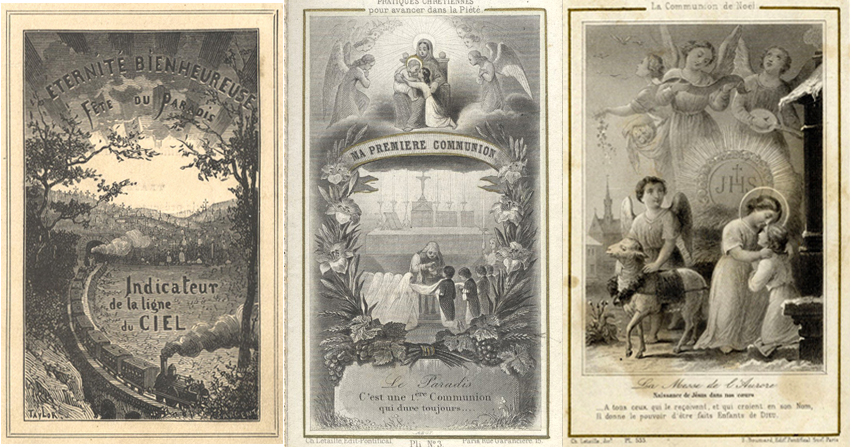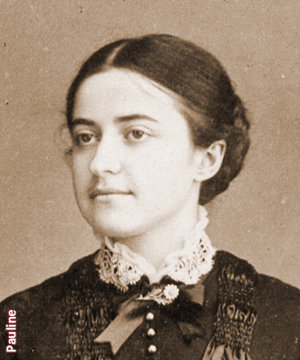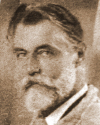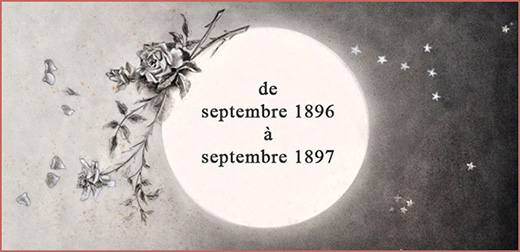
January 1897
On Saturday, January 2, our heroine turns 24; she is aware of the brevity of her life. She will soon say to Mother Agnès: "Alas! how little I have lived!" (Yellow booklet as of July 11, 5). Unfortunately coinciding with his birthday, the Dr de Corniere on visit prescribed a camphor blister of 12 cm. We see his prescription here, and we imagine the long day of waiting 12 hours in the cell for it to take effect.

January 9, Thérèse received a very beautiful help from Heaven. It's the day when Sister Thérèse of St Augustine talks to her about the dream she has just had and which will be so helpful for the patient. Let us listen to Sister Thérèse of St-Augustin, then 40 years old but who knows how to join her young colleague:
[On January 9], as soon as I could speak to him, I said to him:
Memories of a Holy Friendship
- I have good news to tell you, for you, because for us it is not cheerful. Yes, I believe you will die this year.
"Is it possible that I have such great happiness!" But how do you know, is it for sure?
I told him a summary. On January 8, 1897, I was alone in the dormitory, around half-past eleven in the morning, when above my head I heard the cracking of beams being demolished. I understood immediately that the noise was supernatural and that death would come to visit us within the year. Superstition!
But who would be his victim? This is the secret which remained hidden from me and which I did not wish to penetrate. The rest of the day I thought no more about it and in the evening I fell asleep without having the slightest memory. But I dreamed of Sr Thérèse and the next day when I woke up I understood everything. That was the explanation for the noise I had heard the night before. Sister Thérèse of the Child Jesus was to die within a year. It was a terrible blow to my heart.
I say to Thérèse: the proof that you are going to die this year is that in my dream you were named.
"What happiness!" she said, my name has been spoken.
I cannot return the expression of joy which shone in his eyes; she ardently wanted to know everything [about my dream] and I, to please her, wanted to tell her, but in order to mortify both of us we resolved to wait for a day of license and three weeks passed without it. say a single word.
I cannot return the expression of joy which shone in his eyes; she ardently wanted to know everything [about my dream] and I, to please her, wanted to tell her, but in order to mortify both of us we resolved to wait for a day of license and three weeks passed without it. say a single word.
That is to say until February 2.
This January 9 Thérèse therefore learns that she will die within the year, because for her, this premonitory dream of a sister with whom she has invested so much to create ties, constitutes a reality. She reacts by beginning to consider her death concretely, by elaborating it in a letter to Agnès of Jesus written the same day. to Latvia. This is the first written allusion to his death:
“I hope to go up there soon, since if there is a sky it is for me. »
to Latvia
If we look at the original to Latvia, we see that the second part of the sentence because if there is a sky it is for me has been scratched; this is part of the family mystery of alterations! This sentence was fortunately scratched on the letter after the Copy of the writings made for the Trial of the writings in 1910. Probably because the addressee found it incorrect to express in writing a doubt about the existence of the sky. But Thérèse continues freely on the same theme 21 janvier for the feast of Mother Agnès, by writing the poetry PN 45 My joy, which she concludes thus “What do death or life do to me! ”, with an enthusiastic graphic momentum on the draft.
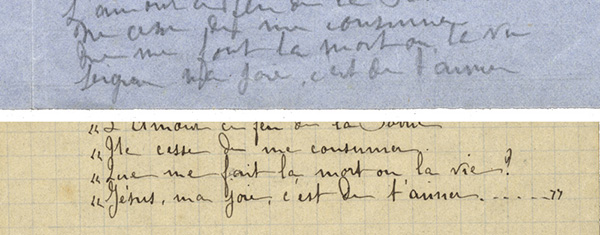
January 27 Therese writes to Brother Simeon. The good old Brother is ill and we fear for his life. Thérèse continues to exploit her certainty of her approaching death with to Latvia : she writes: "I believe that my journey here below will not be long."
January 30 the sky trembles a little in Lisieux, because it is the turn of the newspaper Le Normand to publish his questions about Diana Vaughan, alias Léo Taxil. All of Lisieux is therefore informed that a Roman commission was created in December, headed by Bishop Lazzareschi, who concluded by questioning the reality of Diana. Did M. Guérin come to the parlor to discuss it with Mother Agnès?
February 1897
February 2 is a special day, bringing both great sorrow and great joy. The sentence is linked to the anniversary of the execution of Théophane Vénard. Thérèse asked the Good Lord for a big sentence to offer her because she loves this young saint very much; she has even just composed a poem for him PN 47 "To Théophane VENARD".
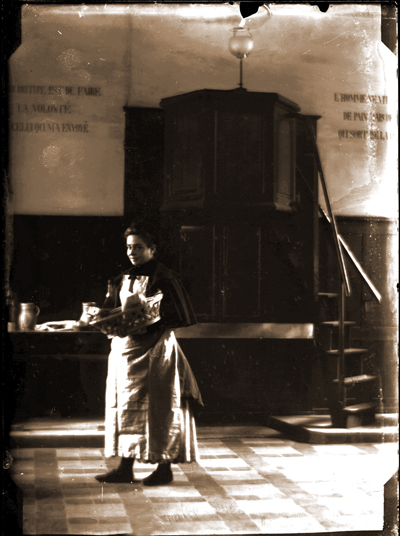
The request for a heavy penalty is granted: she accidentally breaks one of the windows of the service counter in the refectory, which saddens this Carmelite so respectful of poverty. The counter was to the right of the stairs seen in the photo opposite.
This informs us that Thérèse is probably still a waitress in the refectory - the task involves lifting a large tray (see opposite) containing 6 to 8 dishes with the sisters' portions and serving them to the tables, all around the refectory. We start again up to three rounds, because the waitress operates alone.
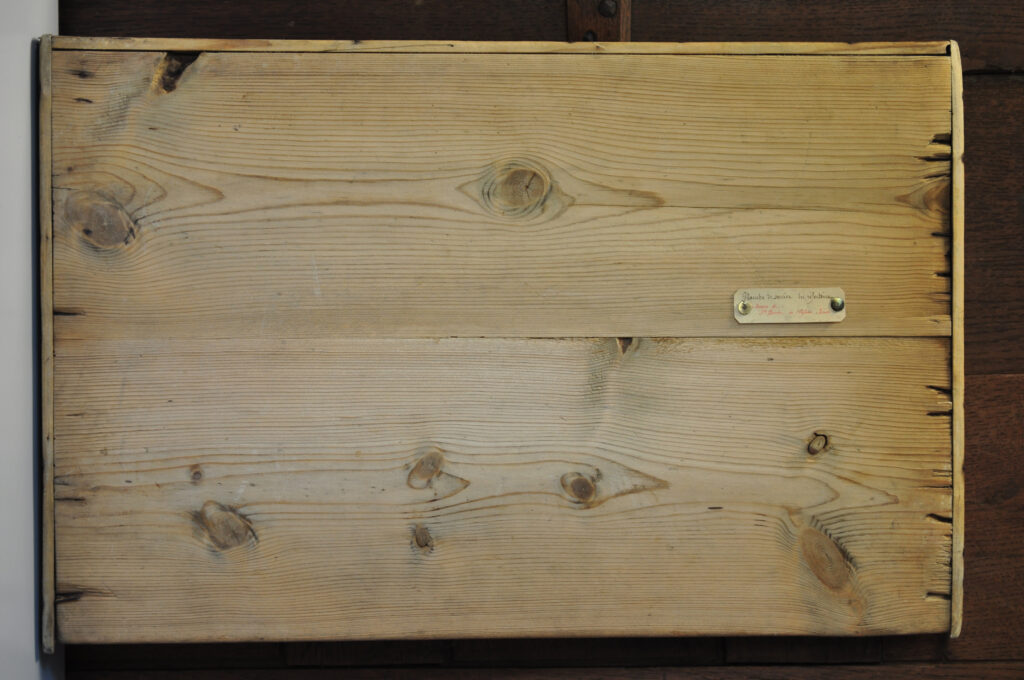
That Thérèse might be a waitress in February, despite her physical dilapidation, would testify to the community's blindness to her health, despite the result of the November novena to find out if she could be sent to Saigon.
But February 2 is also and above all a day of great joy, because it is a day of license with the feast of the Presentation of Jesus in the Temple. The sisters can talk to each other easily, without asking permission. Thérèse therefore converses with Thérèse of St Augustin, as the latter recounts in her Memories of a Holy Friendship :
"At last the longed-for day arrived, and I began my story.
Memories of a Holy Friendship
“On [the evening of] January 8, 1897... during the night I found myself in a dream in a very large and dark apartment. I was alone. I distinctly heard these words: "Monsieur Martin asks for Sister Thérèse of the Child Jesus." I don't know who was speaking, I saw no one. At that moment I had the impression that in a darker place than the one where I was, the little Queen was being prepared to join her darling Father. What were we doing to him? I don't know, but I heard a voice say: "She must be very beautiful to go with Monsieur Martin." Meanwhile, I saw in front of me an open door and although it was open, it was extremely dark, not the smallest ray of light. In this darkness was Monsieur Martin whom I could not distinguish, I saw only red gauze and gold from the shoulders to the waist. I then found myself on the other side of this very dark door, but there everything was luminous. It was a bright sun. I passed without noticing him in front of Mr. Martin who was seated, having beside him his little Queen whom I did not see, I could clearly make out a part of her white dress..."
While Therese listened to me, I noticed an extraordinary happiness on her countenance; when I had finished, she said to me:
- How beautiful ! It's not a dream, it's a dream and it's for me that you had it, it's not for you. I prefer that you had it in preference to me, I believe in it more.
- But why, I said, do you look so happy?
“If you only knew the good you do me; did I not speak to you of the state of my soul?
“No, I don't know anything.
"How come I didn't tell you?" But I see God's permission in it and now I prefer that you didn't know it, what you tell me does me more good. Since the good Lord made it known to you, I am also going to tell you about it. I don't believe in eternal life, it seems to me that after this mortal life there is nothing. I cannot express to you the darkness in which I am plunged. What you have just told me is exactly the state of my soul. The preparation that I am made and especially the black door is so well the image of what is happening in me. You have only seen red in this door so dark, that is to say, everything has disappeared for me and all that is left for me is love."
It is the psychoanalyst Claude Bourreille who analyzes in her book on Thérèse this “night of the sky” one could say (in: From Thérèse Martin to Thérèse of Lisieux, becoming oneself). Thérèse's imagination having been nourished since childhood by an abundance of representations of the sky, it is precisely on this celestial imagination which has been very charged for years that the temptations bear. Loaded with the images she gazed at for a long time, by her own admission. The place of God, one could say, is not an object of representation.
Below are some of Thérèse's images that represent the sky. See here his collection kept since childhood.
February 8, it is the Golden Jubilee of Sister St Stanislaus. Thérèse and she like each other: Thérèse was her assistant in the sacristy for two years (from February 10, 1891 to February 20, 1893). Sister Saint Stanislas calls her "my little girl". Thérèse saw her working in the infirmary with sick sisters: “She heals the wounds with such gentleness! I see her choosing the finest linens, and she applies them with a velvet hand. So with affection, Thérèse composed a play for her on the occasion of her jubilee on the saint honored by her nun's name: "Stanislas KOSTKA". This will be Thérèse's last play, RP 8, and strong of the events of this month, she describes for the first time her future as she envisages it, through the character of St Stanislas: to return to earth to do good to souls after my death.

Seven months after her death, has the community decoded that in this room, Thérèse foresaw her own future?...
February 24, she wrote at length to Abbé Bellière, elaborating on the same theme, to Latvia, where she shares with him her certainty of death since the revelation of Thérèse of St Augustine's dream: "I hope my exile will be short!" she writes. Then, thanks to the elaboration work done on death in her play on St Stanislas RP 8, she can formulate to the abbot something new, her desire to return to earth to save souls there:
“...if Jesus realizes my presentiments... our union far from being broken will become more intimate, then there will be no more fences, no more gates and my soul will be able to fly with you in the distant missions! »
Thérèse to Abbé Bellière, LT 220
March 1897

Thérèse keeps this idea of coming back to earth in mind, she has to think about it often because from March 4 to 12 she does the novena of grace : it is a reputedly infallible novena to St François Xavier.
The young Carmelite had no idea that she would one day be associated with her as Patroness of the missions! The novena sheet on the back tells her miraculous story which must have enchanted Thérèse. She did it, she told Mary of the Sacred Heart, to obtain the grace to "spend her heaven doing good on earth". THE March 19, 1897, she confides to Mary:
"I come to ask St Joseph to obtain for me from the good God the grace to spend my Heaven doing good on earth."
I replied, "You don't need to ask St. Joseph for that!"
But she said to me: "Oh! but yes! I need him to support my request". She had also just asked St. Francis Xavier for the novena of grace. »
This is what develops even more deeply in Thérèse's intuition of her future. She continues in the letter to Father Roulland written that same day of March 19: to Latvia. She writes to him of her acceptance of reality as far as Saigon is concerned: "The scabbard should be as solid as the sword..." indicating her abandonment of any departure for Indochina. Abandonment that she immediately balances with her idea of working after her death: “I would like to save souls and forget myself for them; I would like to save some even after my death! ".
Lent continues; he started on March 3 and Mother Marie de Gonzague gives her chocolate every day. But Thérèse finds that "it's too good for a Carmelite", and she accompanies it with gentian - the root of the gentian bitter tasting is used for its digestive properties. The discreet mortification of Thérèse is discovered by this fine fly of Sister Marie de la Trinité.
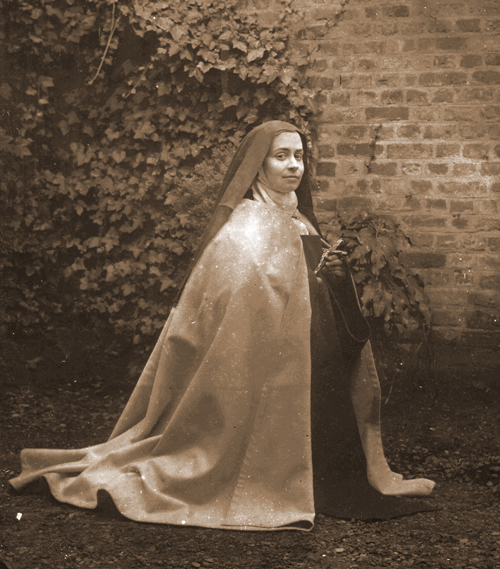
March 25 on the Feast of the Annunciation, it is the Profession of Sister Marie of the Eucharist. The profession takes place in private at chapter (photo where we see the floor decorated for a profession), and the taking of the black veil a little later in public, in the Chapel of carmel.
For Marie Guérin, a somewhat shy and gentle woman, Thérèse composed the surprising poem my weapons PN 48. She uses an extraordinary combat vocabulary, which she draws in part:

An army arrayed in battle, an army camp, the arena, iron and fire, armour, sword, cuirass and shield. I have powerful weapons, I fight valiantly. I also want to sing while fighting. It is by violence that the Kingdom of Heaven is ravished: singing I will die, on the battlefield, Arms in hand!
Thérèse intended this poem for Marie Guérin, who would sing it in the heating room in the evening, and would surely benefit from it during the 8 years she had left to live. But Thérèse draws these words from the depths of her soul; it is his profound attitude that she describes, the violence essential to the pursuit of his personal fight against a dilapidated body and the ever-present night.
April 1897
Despite the chocolate throughout Lent, Therese is increasingly ill. From the end of March, she was considered by the sisters to be seriously ill: cough, anorexia, indigestion, daily fever. We wonder if the remedies are not worse than the disease:
- Friction with a horsehair glove
- blisters that make the epidermis raw
- Slug syrup. This syrup is made from the slime of slugs - many in the garden - which are drained in a canvas bag with coarse salt. Let's say that link is easy to make with indigestion!
Thérèse's physical condition became so serious that in this month of April she was exempted from the ordinary duties of the Carmelites. She is no longer a waitress in the refectory herself, she no longer participates in the community laundry, nor in the office in the choir. No more lingerie work either, except a bit of sewing for Sister Marie of St Joseph.
The April 6, Mother Agnès finds the situation worrying because she begins what will become the Yellow notebook. Is it to keep "crumbs of wisdom" from his little sister? With what are called Last interviews, made up of notes taken mainly by Mother Agnès but also by other sisters, we find ourselves from April onwards faced with a multitude of anecdotes and events – all of which have equal weight: they each constitute a simple entry into these biographical notes on Thérèse's last months. Nearly 900 entries, or 150 per month, with an average of 5 per day.
When re-reading these notes, one still feels the emotion created by the pointillist painters who were contemporary with Thérèse. The juxtaposition of very small touches of paint, point by point, does not reveal the whole subject but makes us guess its life. For example, there is no entry for the April 9, anniversary of Thérèse's entry into the Carmel 9 years ago. What did she think, knowing her approaching death?
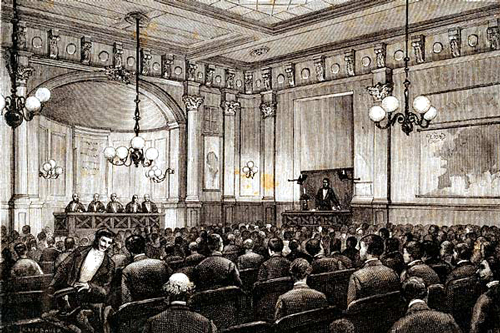
The 18 April is Easter Day, and the next day is Easter Monday April 19th, Léo Taxil finally gives his long-awaited press conference, in the Great Hall of the Société de Géographie, founded in 1821 boulevard Saint-Germain in Paris. He promised to finally introduce Diana Vaughan in person.
For several weeks, Thérèse has suspected something fishy because in recent issues of Memoirs of Diana (issue from January 10 to March 31, 1897), which come out regularly and to which the Carmel has access, the young woman criticized the bishops of the Roman commission who questioned her identity. Such criticism leads Thérèse to think that "it does not come from the Good God."
On this Easter Monday, Taxil informs all the journalists present that Diana is a fictitious person. Today, the full text of his lecture is on the internet, but at the time, Le Normand mentions it in a paragraph of April 21 and it is in the edition of April 24th that the conference is summarized for the readers of Lisieux. Thérèse discovers that there are people who only do evil for fun.

And, oh shame, she's associated with it. Léo Taxil had announced that his conference would be accompanied by a screening session. We can see on the drawing of the conference room made in 1885 (above) the layout of the room and the screen for the projections. Le Normand tells that despite the promises of many screenings, there was only one photo on the wall: the apparition of Saint Catherine to Joan of Arc in her prison, from a Carmelite convent! It is photo n° 14 of Thérèse, which Mother Agnès had suggested she send to Diana during the summer of 1896, after having touched it up herself. And Diana had even answered Therese...
The next day April 25, it was Céline who wrote a few lines to Brother Siméon this time, no doubt reflecting the recreation of the previous day in the heating room: seizes the soul." (Read the full letter here). Did Thérèse allude to Taxil when she wrote a little later, in this sentence from the Manuscript C, folio 5v: "There are truly souls who do not have faith." But that same day, she wrote to Abbé Bellière to Latvia calling him for the first time my dear little brother. As if to say to him: you, you are real, you are authentic, with all your weaknesses – unlike Taxil.
The 27 April place another blister, just before Celine's birthday, who will be 28 on 28 April. This is the beginning of a new phase in the aggravation of Thérèse's illness. Madame Guérin mentions it in a letter of the same day to her daughter Jeanne: "Thérèse is still very unwell. She had her blister yesterday. Dr. de Cornière sees her sick. She is coughing up blood in the morning. We are afraid that it will become very serious."

Dr. de Cornière had a small instrument purchased to develop Thérèse's breathing capacity: a wonderful ball, but Thérèse no longer has the strength to use it much.
May 1897

The month of May, especially towards the end, will be marked by new abandonments of community life for Thérèse: recreation and the care of the novices. Two areas that were very stimulating for her, but she can't take it anymore. This is the time when she takes half an hour to go back up to her cell in the St-Élie dormitory, up the stairs where she sits at each step.
May 1897 is also the month of the last poems, all composed on request. Requests made by people who do not realize that Thérèse is in an immense state of exhaustion. The worst is certainly a former prioress of the first carmel of Marie de la Trinité, rue de Messine in Paris (Mother Henriette). Thérèse composes for her A leafless rose (PN 51), five stanzas completed on May 19.
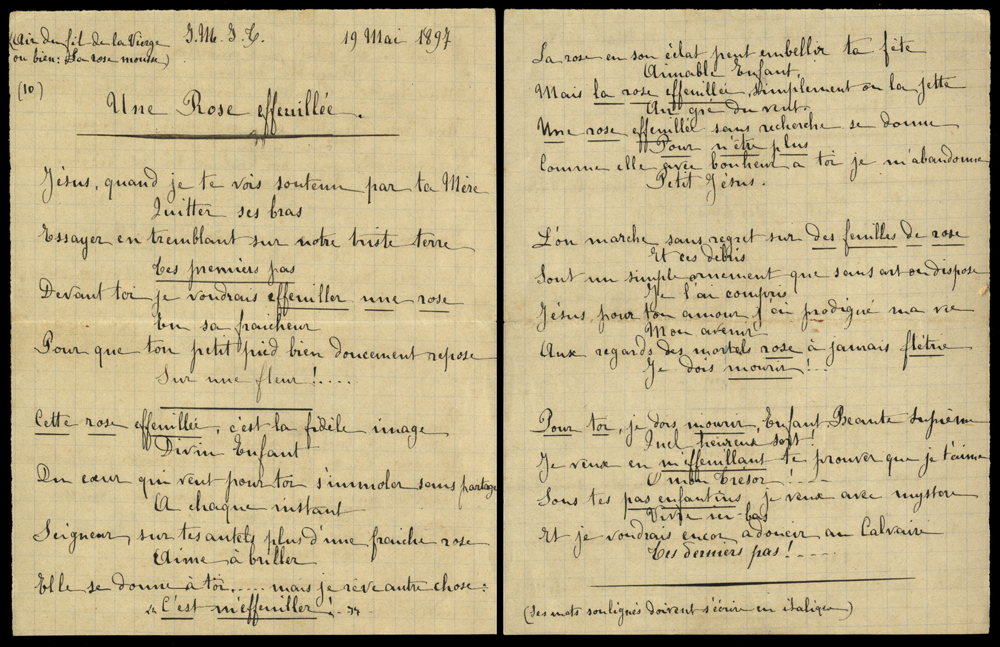
But Mother Henriette is not happy and asks for an additional stanza explaining that this leafless rose will be reformed in heaven – she does not feel like leafing out forever! She does not know that this sky is precisely the heart of Therese's inner drama. Thérèse refuses to add a stanza, saying: "May the good Mother make this verse herself...for me, my desire is to be stripped forever to rejoice the Good Lord." Advice and memories de Sister Mary of the Trinity, No. 53.

It's the time of PN 53 : "Lord, you chose me from my earliest childhood And I can call myself the work of your love..." An effort still requested by Marie de la Trinité, a little unaware of what she demands of Therese.
Same thing for PN 54, at the request of Sr Marie of the Sacred Heart: "Why I love you O Mary", where Thérèse writes down everything she has always dreamed of
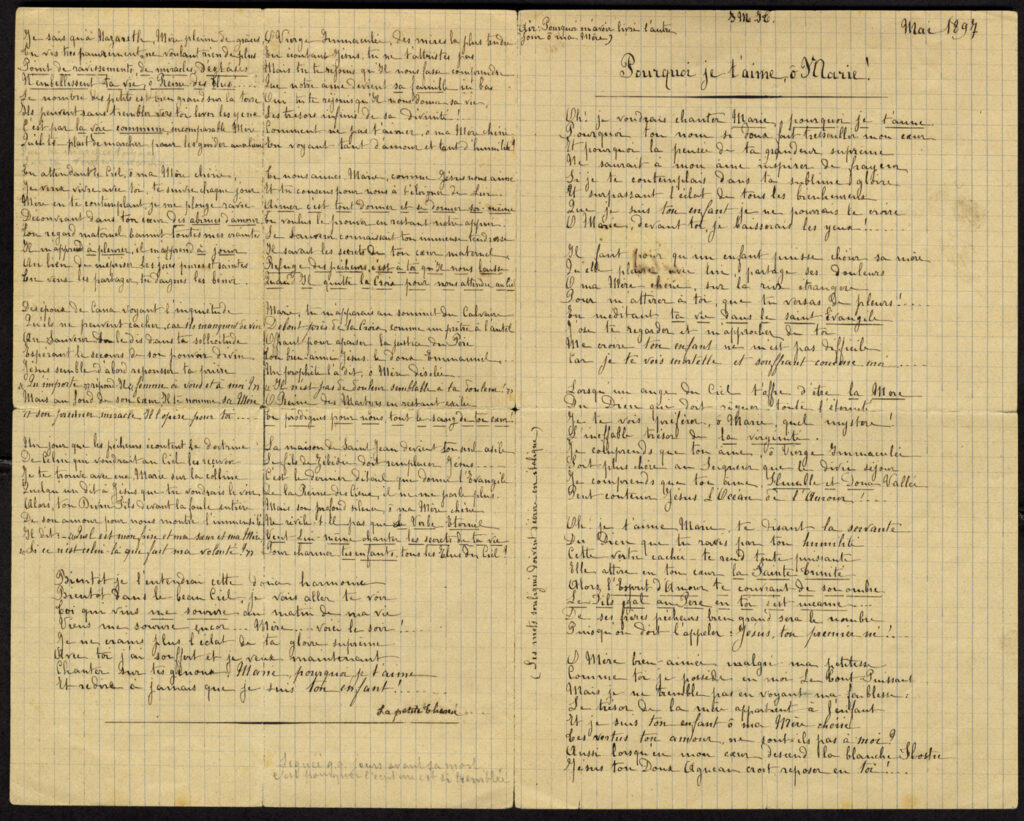
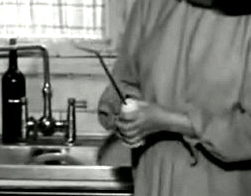
May the 23 , she must undergo several sessions of fire points - this is called fire puncture. A cautery is used that looks like the object being held in this photo to the right. It is heated on a brazier, and several are used at the same time, as it is kept on the patient's body for a very short time. It is a technique of heat different from blisters.
This technique is not specific to Dr. de Cornière, because in other Carmels we treat like this, as we know from the circular, these short biographies written on the occasion of the death of a sister, and sent to all the Carmels. They were read in the refectory, and Thérèse liked to hear them. We learn from the circulars that a sister of the Carmel of Dorat had bouts of fire (deceased on January 31, 1889). Another from Libourne (March 12, 1897 bis.), etc. Sister Marie of the Sacred Heart herself will undergo it to treat her hips, and will find it very effective.
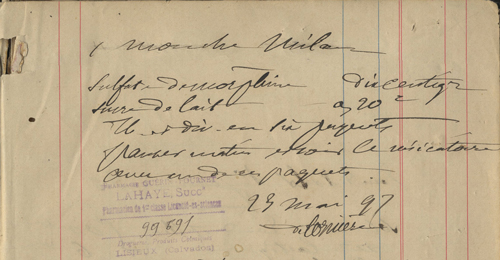
Celine testifies at folio 380v of the Trial of the Ordinary: "I can still see her, after a doctor's session where she had just been given more than 500 points of fire on her side (it was me who [have] counted them), going up to her cell and take his rest on his hard mattress." That day, the session is so terrible that Dr. de Cornière orders morphine (see photo on the left of the page of the prescription book).
Morphine is often used in salt form to facilitate its absorption by the body in non-injectable forms. There are two salts, sulphate and hydrochloride of morphine. The appearance is a water-soluble white crystalline powder. Here de Cornière orders sulphate. The prescription was signed by the pharmacist as filled. Alas, six days later the 29 May Thérèse will suffer peaks of fire for the second time.
But the day before, the evening of May 28 a wonderful incident occurs. Sister St John the Baptist asks him for some help with an urgent paint job. Thérèse, red with emotion, energetically refuses (badly, she admits) and Mother Agnès, present during the interview, protests the state of health of Thérèse. What earned us the beautiful letter to Latvia where Thérèse tells Mother Agnès the rest of the incident:
And me, who preaches so well to others!!! I'm glad you saw my imperfection. Ah! How good it does me to have been naughty!... You didn't scold your little girl, however she deserved it, but the little girl is used to that, your gentleness tells her more than harsh words. , you are for her the image of God's mercy. Yes but... Sr St J. Baptiste on the contrary is usually the image of the severity of the good Lord, well! I just met her, instead of walking past me coldly, she kissed me saying (absolutely as if I had been the cutest little girl in the world): "Poor little sister, you have pity me, I don't want to tire you, I was wrong, etc., etc." I who felt in my heart perfect contrition, I couldn't believe she didn't reproach me.
Thérèse to Mother Agnes, LT 230
I know very well that deep down she must find me imperfect, it's because she thinks I'm going to die that she spoke to me like this, but no matter, I only heard sweet and tender words coming out of her mouth, so I found her very good and I very bad... When I got back to our cell, I wondered what Jesus thought of me , immediately I remembered these words which he addressed one day to the adulterous woman: "Has anyone condemned you?..." And I, with tears in my eyes, answered him: "No one, Lord..."

Under these circumstances, how easy it will be for him to write his last poetry, May the 31 1897, for his dear Sr Therese of St Augustine : Abandonment is the delicious fruit of love - PN 52.


